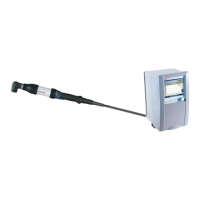302/641 Bosch Rexroth AG | Tightening Technology 3 608 878 300
System 350 | 3 608 878 300/2019-03
Determination of the channel results to be output
Fig. 6–54: Configuration of the results output via field bus in the communication unit: Selection of the application blocks for results
output
The results selection for the channel results from a tightening application is implemented in the
Application data index sheet. The function is the same as that for single-channel output in the channel
(see page 299) and applies to all channels in all application blocks.
Determination of the application results to be output
The results for the application results are also selected on the Application data tab (Figure 6–54) in the
Application results selection panel. The settings made here apply to all application blocks.
Checking the assignment of the send memory area
• The memory required as a result of the results selection is determined as follows:
Sum of the results in the application block
+ (Sum of the results in channel result multiplied by the number of participating channels)
+ Sum of the single-channel results
+ Sum of the error outputs
• The assignment of the send range in the interface module is displayed in the right Send range
section of the KE field bus data window. A warning is output and the last entry is corrected in case
the configured memory area is exceeded.
• The start address of an individual result is determined as follows:
Reserved storage area for control signals
+ Relative start address of the application/single-channel tightening result block (from Send range)
+ Relative start address of the result.
If 4 bytes are assumed as the reserved memory area for control signals, the attained actual torque of the
second channel of an application started in application block FO2, as seen in Figure 20, is:

